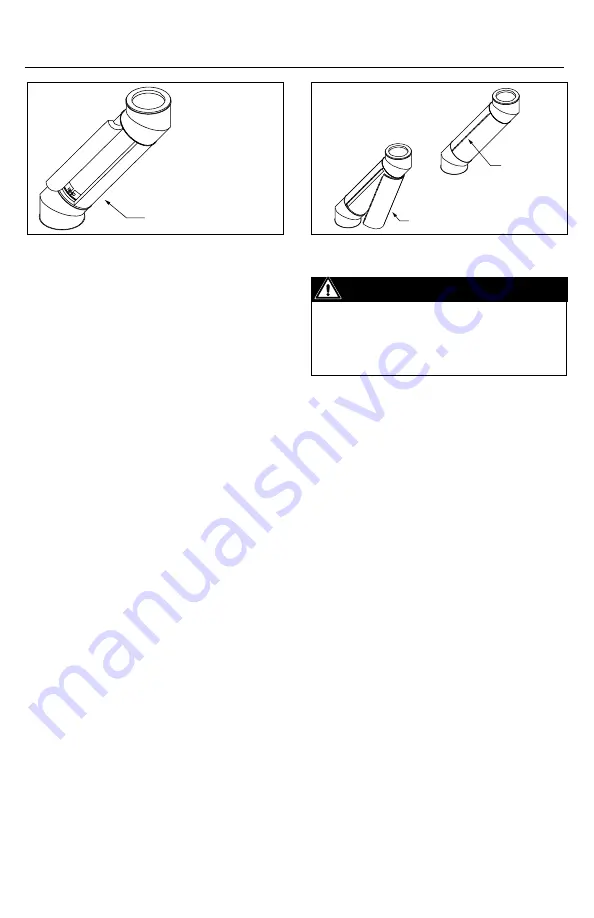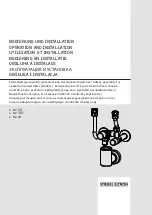
33
Figure 63
SECtIon g - grEaSE DuCt appLICatIon
(DIS onLy)
aCCESS
Grease Duct installations require provisions
for cleaning the interior of the duct. NFPA 96
clean-out requirements are as follows:
1. A clean-out must be provided at each
change of direction except where the
entire length of the duct can be inspected
and cleaned from either the hood or the
discharge end.
2. On horizontal duct runs, at least one (1) 20”
(508) diameter opening must be provided.
Where the duct is smaller than 20” (610)
diameter, openings large enough to permit
cleaning must be provided at intervals of not
more than 12’ (3.66m).
3. Openings may be at the side or the top of
the duct whichever is more accessible. When
the opening is on the side of the duct, the
lower edge of the opening must be at least
1-1⁄2” (38) above the bottom of the duct. For
Model DIS Grease Duct, this is accomplished
by the use of the Grease Tee (GT90) with a Tee
Cap (TC).
4. On vertical duct where personnel entry is
possible, access must be from the top of the
riser. Where entry is not possible, access must
be provided at each floor.
Figure 64
Important
ACCESS REQUIREMENTS ARE SUBJECT TO
CHANGE IN ACCORDANCE WITH LOCAL
CODE. LOCAL AUTHORITIES SHOULD BE
CONSULTED FOR EXACT REQUIREMENTS.
uSE anD InStaLLatIon oF
InDIVIDuaL partS
1. DuraVent Model DIS parts numbering and
parts usage are discussed under chimney
applications beginning on Page 4 of these
installation instructions.
2. Those parts specific to grease duct, which
are not normally used in chimney applications,
are discussed in the following sections.
3. Installation is the same as described
for standard application on Page 5, but a
additional bead of sealant must be applied.
See Figure 2.
HorIZontaL DraIn LEngtH (HDL)
1. Horizontal Drain length is equipped with
a 1” (25) NPT nipple, which is attached to the
inner flue and extends through the outer
casing to provide a path to drain grease,
condensate or wash water from the duct. See
Figure 66.
2. A dam is attached to the inside of the inner
flue adjacent to the nipple to channel the
effluent to the drain.
3. The duct drain is intended for use at the
end of a horizontal run where access and
drainage is needed (See Figure 67).
Install the Insulation
(DIS only)
Tighten the
Bolts and
Install the
Locking Bands
Install the Outer Shell By
Inserting the Crimped End
Under the Male Coupling First









































